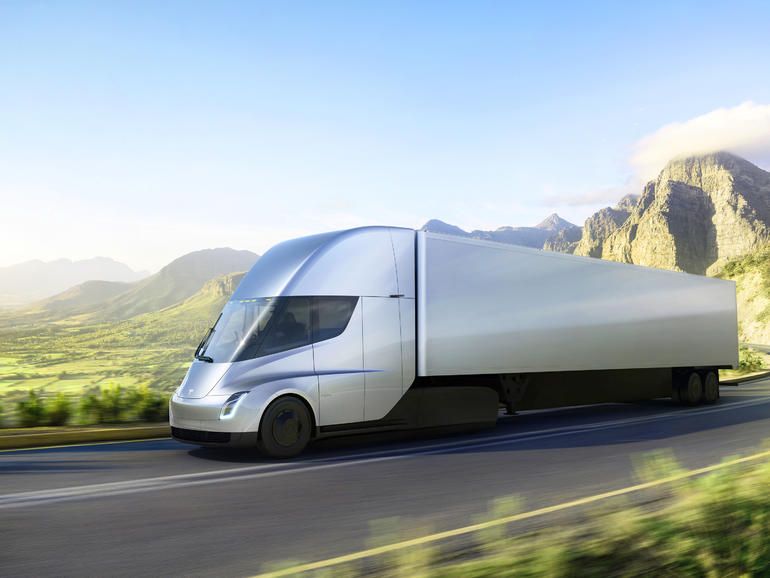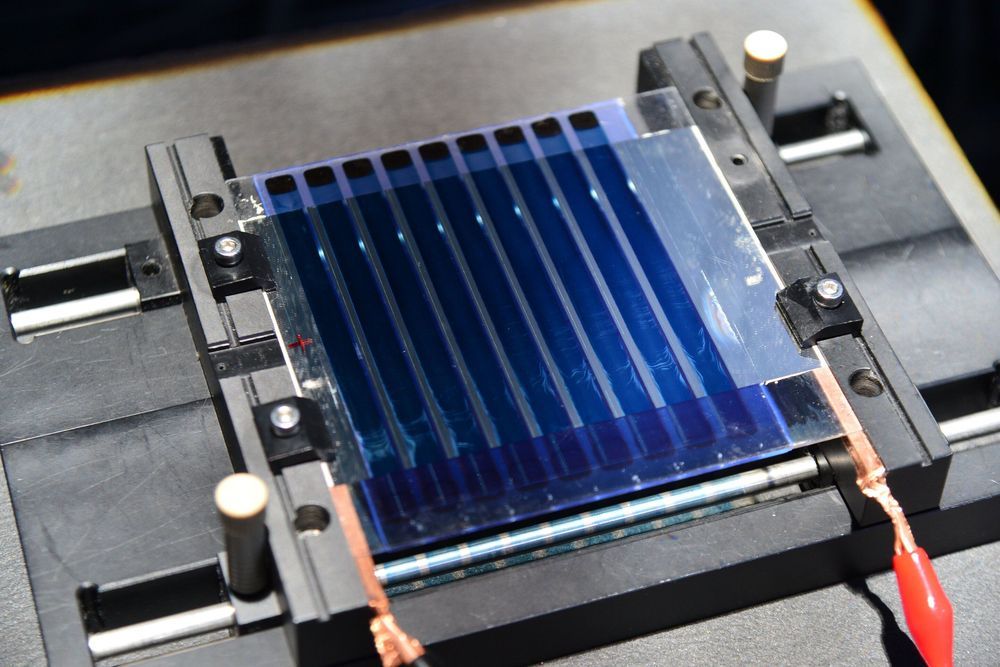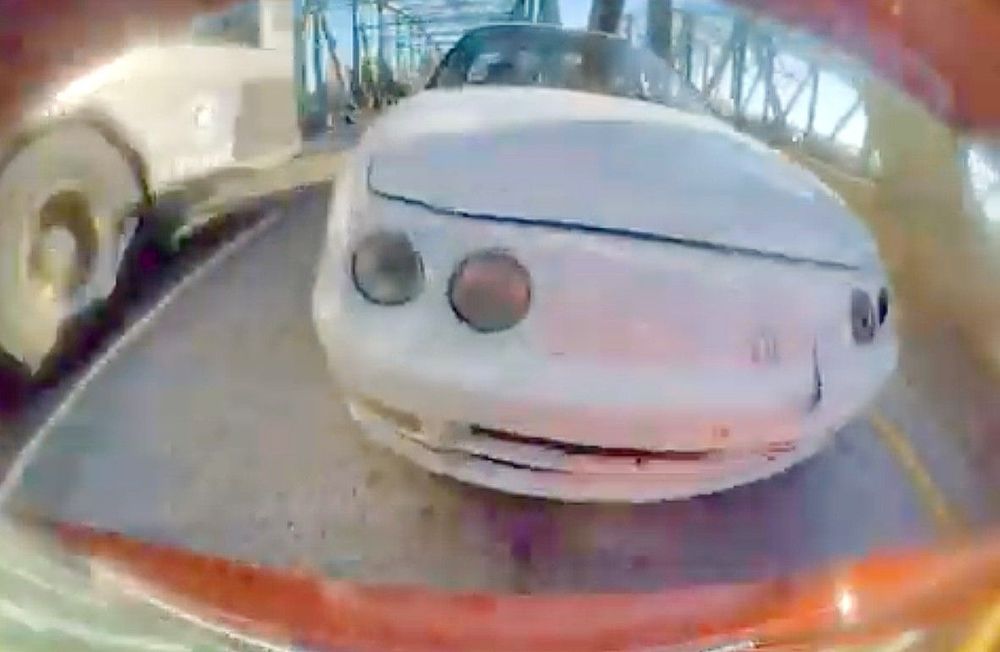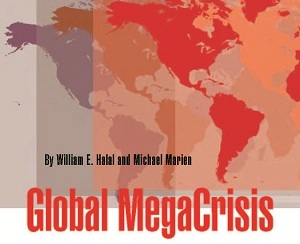2021 Living Vehicle is not just a modern home that promises all the comfort of today’s living but can also charge up an EV regardless of where this and the trailer is parked at.





If Mad Max bikes were electric they would probably look like this design rendering from Shane Baxley. An electric power unit, orbital wheels, two-sided swingarm, manual transmission and a raw minimalistic bodywork complete the package.
Hollywood-based concept artist and vehicle designer Shane Baxley created this motorcycle design rendering on his computer. And it looks mind-boggling. The electric motorcycle design features cyberpunk lines and wheels without hubs. The idea of a hubless wheel bike is not new as it was conceived by an Italian designer, Franco Sbarro, in the 1980s.
To create a striking visual effect, the electric motorcycle is fitted with spokeless wheels equipped with knobby tires. As we said before, the wheels are hubless and the functionality of the wheel hub is taken over by the rim while the two-sided swingarm is connected to the inside of the bike at three points at the front and rear.

Researchers in Korea have successfully developed a large-area, organic-solution-processable solar cell with high efficiency. They achieved their breakthrough by controlling the speed at which the solution of raw materials for solar cells became solidified after being coated. The team, led by Dr. Hae Jung Son from the Photo-electronic Hybrids Research Center of the Korea Institute of Science and Technology (KIST), have identified the difference in the mechanism of film formation between a small area and a large area of organic solar cells in a solution process, thereby making possible the development of high-efficiency, large-area organic photovoltaics.
If a photovoltaic material is made in the form of paint that can be applied to any surface, such as the exterior of a building or a car, it will be possible to achieve energy self-sufficiency and provide low-cost, eco-friendly energy to regions suffering from energy poverty. Such technology would provide easy installation of photovoltaics, even on urban buildings, and the photovoltaic panels could be maintained by re-applying the “paint.”
Solution-processable solar cells, which work by coating the surface with the solar cell solution, are not yet feasible for industry. Currently, such large-area photovoltaics present reduced performance and production difficulties due to material- and process-related limitations, and this has been an obstacle to commercialization.

Panasonic is adding another production line to the massive factory it operates with Tesla in Nevada, an expansion that will increase battery cell capacity by 10%.
The Sparks facility, dubbed Gigafactory 1, is the centerpiece of Tesla’s plan to expand global battery capacity and reduce the cost of electric vehicles. Panasonic has been its most important partner in that project, which, based on a recent agreement, should last until at least 2023.
Tesla and Panasonic initially planned for the Gigafactory to have the capacity to produce 35 gigawatt hours of batteries each year. That goal was achieved with 13 production lines. This latest expansion, which was first reported by the Reno Gazette Journal and confirmed by TechCrunch, will add a fourteenth line.

There are advantages to having a vehicle with instant acceleration. Stop lights become more fun, and occasionally, it’s equally to surprise some high-performance gas cars with a sudden sprint. At times, though, this instant acceleration becomes a safety feature, as recently proven by Tesla owner Daniel Spalding, who avoided a potentially nasty crash by a hair’s breadth thanks to his Model 3’s torque.
Spalding, who has been documenting his ownership experience in his YouTube channel, recently shared a rather tense video that he recorded recently. The video was brief, but it featured something that no driver ever wants to see from the rear — a fast-approaching car that’s not decelerating enough. Usually, incidents like this end up with both cars being damaged significantly. Some drivers and passengers may even get injured.
Fortunately for Spalding, his Model 3 can access its full power when he floors the accelerator. In his video’s description, the Model 3 owner noted that traffic in front of him came to a sudden stop, and as it turned out, the car behind him — what appeared to be an Acura Integra — was clearly not paying attention. When he realized that the car behind him was about to hit him, Spalding floored his Model 3’s accelerator.
Tesla Motors, the all-electric vehicle manufacturer, is known for building popular EVs such as the Model 3, Model S, and upcoming Cybertruck. Tesla says it is developing the hardware and software necessary to power the world’s first self-driving cars. This software costs Tesla owners an additional $8,000 to purchase what it calls the Full Self-Driving Capability suite of features. But do all the features of the Full Self-Driving Capability package work as promised? We explain each feature’s intended use, and show you how they performed in our tests.
UPDATE: After publishing this video, a viewer alerted CR that there was a mismatch at 5:50 between what we described happened with stop sign control–our tester slamming on the brakes after the car missed the stop sign– and what we showed onscreen–the car slamming on the brakes. CR’s testers did experience both scenarios.
Check out https://www.ConsumerReports.org for the latest reviews, tips, and recommendations and subscribe to our YouTube Channel: http://bit.ly/1Nlb1Ez
Follow Us on Social:
Instagram: http://bit.ly/1I49Bzo
Facebook: http://on.fb.me/1IQ2w5q
Twitter: http://bit.ly/1Yf5Fh2
Pinterest: http://bit.ly/1P37mM9

Collective Intelligence to Solve the MegaCrisis
William E. Halal, The TechCast Project, George Washington University
The coronavirus is a stark reminder of the devastating damage that could be inflicted by cyberattacks, superbugs, freak weather and a variety of other threats. These wild cards are in addition to the existential challenge posed by climate change, gross inequality, financial meltdowns, autocratic governments, terrorism and other massive problems collectively called the Global MegaCrisis.
I sense the world is so frightened by recent disasters that people are searching for new solutions. They seem ready to break from the past that is no longer working. Climate change is starting to bite, for instance, and there is a growing consensus that the status quo is no longer sustainable.
I have studied this dilemma for decades, and I think it can be best understood as a transition to the next stage of social evolution. The Knowledge Age that dominated the last two decades is fading into the past as AI automates knowledge, forcing us to move beyond knowledge and develop a global consciousness able to resolve the MegaCrisis.
Yes, I know this is a bold claim, but that is how the shift to a world of knowledge looked 40 years ago. When computers filled rooms, I recall telling people that we were entering a world of personal computers. The typical response was “Why would anyone want a personal computer?”
Just so, today’s post-factual era illustrates how the smart phone, social media, and autocrats like Trump have moved public attention beyond knowledge and into a world of values, emotions and beliefs. Now the challenge is to use these new powers of social media to shape a global consciousness, or face disaster. While this may seem impossible, that is always the case before major upheavals. Nobody thought the USSR would collapse up until its very end.
In fact, the Business Roundtable’s recent announcement that business should move beyond the bottom line to include the interests of all stakeholders is revolutionary. It has now been promulgated by the World Economic Forum and other influential bodies. The gravity of this change is such that business is now being told to help resolve the climate crisis. Larry Fink, who runs the biggest investment firm in the world (Black Rock), directed the companies he owns to help address climate costs in their operations; within days, many firms announced climate plans.
This historic shift in consciousness could make corporations models of cooperation for society at large. In short, I think the world is heading toward some type of historic shift in consciousness, a collective epiphany, a code of global ethics, a spiritual revolution, a political paradigm shift or a new mindset. Without a consciousness based on global unity, cooperation and other essential beliefs, there seems little hope. And with a shift to global consciousness, it all seems possible.
Toward a Global Consciousness
The governing ideas inherited from the industrial past are outdated and heading toward disaster. It is a collapse of today’s reigning “materialist” ideology of Capitalism, economic growth, money, power, self-interest, rationality, knowledge, etc. These values remain valid and useful, of course, but they are now badly limited. Prevailing practices in the US, as the most prominent example, are failing to address the climate crisis, low wage employee welfare, universal health care, women’s rights, political gridlock, aging infrastructure and other social issues that lie beyond sheer economics.
This could become a “Collapse of Capitalism” roughly equivalent to the “Collapse of Communism” in the 1990s, and it stems from the same fatal flaw – failure to adapt to a changing world. Communism could not meet the complex demands of the Information Revolution, and now Capitalism seems to be failing to adapt to a unified globe threatened by pandemics, climate change and the other threats making up the MegaCrisis.
The big question remaining is, “What should be the new vision, values, principles, and policies?” At the risk of appearing pedantic, I integrate what has been learned above and my forthcoming book, Beyond Knowledge, to outline five principles of what I consider “global consciousness.”
1. Treat the planet and all life forms as sacred. The Fermi Paradox notes that no other civilizations have been detected after decades of SETI searching. This rarity of life reminds us what a miracle plant Earth really is, and that we are responsible for its well-being.
2. Govern the world as a unified whole. Nations remain the major players in this global order, but they should be lightly governed by some type of global institution like the UN and other international bodies. Individuals should continue to be loyal to their nations and local institutions, but they should also accept their role as global citizens.
3. Collaborate With All Stakeholders. Free enterprise is the basis of society, and the good news is that business is on the verge of becoming cooperative. The Business Roundtable announcement that all stakeholders should be treated equally with investors seems an historic breakthrough. This move to a quasi-democratic form of enterprise could set a new standard for collaborative behavior and human values throughout modern societies. One of the benefits from a tragedy like this crisis may be a loss of faith in the status quo and an urge to cooperate. I see it everywhere, and it is a blessing in disguise emerging out of chaos.
4. Embrace diversity as an asset. Rather than becoming a uniform pallid bureaucracy, a unified world should embrace the wondrous diversity of cultures and individuals. Working across such differences poses a challenge, naturally, but differences are also a source of new knowledge, talents and human energy.
5. Celebrate Community. Any society needs frequent opportunities to gather together in good spirit, enjoy differences and commonalities, and to simply celebrate the glory of life. The World Olympics Games, for instance, are special because they provide a rare feeling of global community. We could witness a flowering of celebratory events over the coming years to nourish the global soul.
Shaping Consciousness
This is only one small study, of course, but I hope it provokes thinking toward a widely held vision for planet Earth at a time of crisis. An historic change in consciousness is hardly done overnight, and the obstacles posed by the status quo are formidable. But the Information Revolution provides a powerful method for shaping consciousness by using the Internet and public media. Think of the explosion of ideas, hatred and forbidden desires released by billions of people blasting into loudspeakers like Facebook and Twitter. Anybody can use the media to shape public opinion instantly, for better or worse.
The task we face is to shape a unified consciousness out of this morass of differences to solve the global crises that loom ahead. Today’s threats to reason is challenging us to counter wrongheaded beliefs and to provide more attractive visions, such as the principles for global consciousness outlined here. I suggest the place to begin is by discussing these ideas as widely as possible, and to shape public opinion roughly along these lines.
Sign up for our newsletter at www.TechCastproject.com
I was so wrong.
Last week, Drs. Marc Miskin*, Itai Cohen, and Paul McEuen at Cornell University spearheaded a collaboration that tackled one of the most pressing problems in microrobotics—getting those robots to move in a controllable manner. They graced us with an army of Pop-Tart-shaped microbots with seriously tricked-out actuators, or motors that allow a robot to move. In this case, the actuators make up the robot’s legs.
Each smaller than the width of a human hair, the bots have a blocky body equipped with solar cells and two pairs of platinum legs, which can be independently triggered to flex using precise laser zaps. The control is so accurate that the team was able to simultaneously jigger the legs of a battalion of microbots in a coordinated “march.”